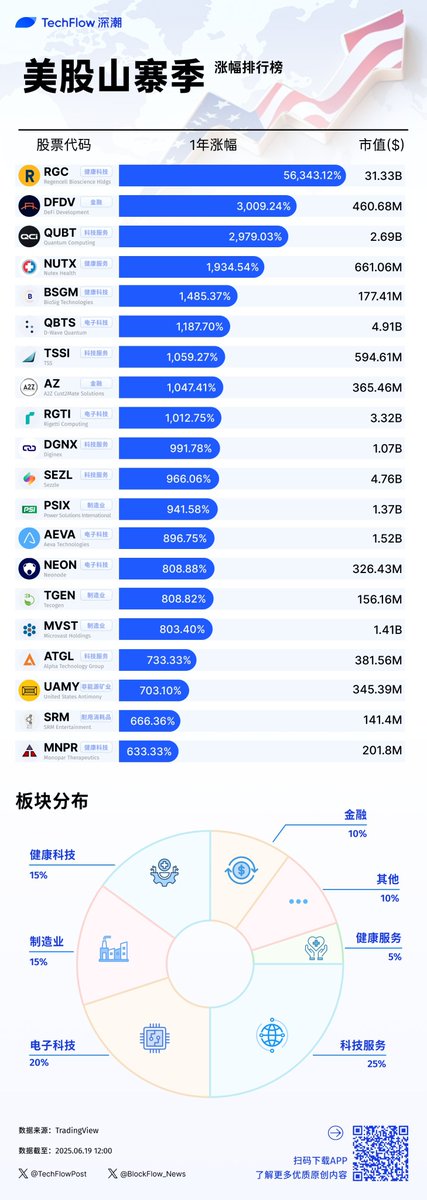"Good news, Raging Copycat season is here
Bad news in the U.S. stock market"
Damn, I'm also going to take some money to engage in U.S. stocks
Let's lay a foundation first, and prepare to collect U.S. stocks below:
A complete research and decision-making framework for the U.S. stock valuation system
Most leeks only look at "P/E is not cheap"
The real valuation system, behind it:
Asset quality
Profitability
Macro variables
Valuation models
The multi-dimensional interaction of market games
The following is a systematic, U.S. valuation analysis framework 👇 that is common to U.S. stocks
1️⃣ Asset: Business Quality
The premise of valuation is that the company itself is valuable. This part focuses on whether the company can survive the cycle and continue to be profitable in the long run.
a. Industry barriers: Is there a moat? For example, Apple's ecological stickiness, Microsoft's corporate lock-in effect, and Visa's network effect.
b. Business model: To B (SaaS), To C (consumer electronics), and platform (Meta/Google) are very different, and the valuation methods are also different.
c. Management ability: to see whether its past execution and capital allocation are rational, such as Berkshire's Warren Buffett and Apple's Cook, are very representative.
d. Financial soundness: the quality of the balance sheet, whether it has high cash, low debt, and the ability to weather the recession.
ESG and compliance factors: Institutional investors are increasingly demanding ESG, especially pension funds and sovereign wealth fund buyers.
🔎 Summary: This part determines whether you are "willing to own" the company, not only to speculate, but also to trust its future.
2️⃣ Earnings Power & Growth
The core variable that determines a company's valuation is whether profitability is strong enough and whether growth is sustainable.
a. ROE/ROIC: The higher the return on capital, the more money you make with the same money, which is one of the most important metrics for Buffett.
b. Profit margin: High gross profit margin and high net profit margin often mean that there is pricing power, such as Adobe's subscription software and NVDA's AI chips.
c. Revenue and profit growth: Companies with sustained double-digit growth tend to have much higher valuation tolerance than stable companies.
d. Unit Economics: SaaS looks at LTV/CAC; Consumer e-commerce will look at ARPU and repurchase rate; These are the keys to early-stage business valuation.
e. Operating leverage: How much can profit increase if revenue increases by 1%? This is the embodiment of the efficiency of the growth stack.
🔎 Summary: This part is the determinant of the pricing "ceiling". If you don't grow, you're not worth a high multiple.
3️⃣ External Variables: Macro & Sector Context
Markets are dynamic, companies do not grow in a vacuum, and valuations must take into account the macro environment, interest rates, policies, and cycles.
a. Interest Rate Impact: The most critical parameter in the discount model. The higher the interest rate, the lower the valuation of high-growth stocks. Over the past two years, tech stocks have been driven by interest rates.
b. Economic cycle: cyclical stocks (e.g., energy, industrials) depend on which stage; Defensive stocks (e.g., consumer goods, pharmaceuticals) are more transcyclical.
c. Industry life cycle: For example, AI is just starting out, and the valuation can be overdrawn for 10 years; When traditional retail enters a period of recession, it must be discounted.
d. Regulatory environment: Technology giants, financial platforms, and Chinese concept stocks are all subject to policy risks, and their valuations are subject to "policy discounts".
e. Exchange rate factors: For global revenue companies such as Meta, Apple, and Nike, US dollar fluctuations directly affect earnings performance.
🔎 Summary: You are not doing DCF in a vacuum, macro anchoring, determining whether the valuation has logical support.
4️⃣ Valuation Techniques: Valuation Techniques
The core of valuation is pricing – whether the price at which the purchase reflects future cash flows and risk.
a. Relative Valuation (Multiples)
P/E: It is suitable for enterprises with stable profits, which needs to be compared with the industry in combination with the historical range.
EV/EBITDA: Suitable for capital-heavy companies, filtering out capital structure differences.
P/S: It is often used for loss-making but fast-growing companies (SaaS, AI), and it is necessary to be very cautious if it is higher than 20 times.
PEG: P/E combined with the rate of growth to measure "valuation reasonableness".
b. Absolute Valuation Method (DCF/DDM)
DCF: Discounted Future Free Cash Flow. Suitable for mature businesses, but very sensitive to assumptions.
DDM: Suitable for companies with high dividends and stable growth (e.g. utilities, traditional blue chips).
Key variables: Discount rate (WACC), growth rate (g), FCF forecast.
c. Special case valuation method
Valuation of SaaS and platform companies: TAM × market share × profit margin × EV/S multiples to estimate the future space
Valuation of AI enterprises: "Model derivation" + "Narrative-driven" with EV/S pricing can be used in the early stage
🔎 Summary: The more complex the better, the valuation model is not adapted to the company's stage, business logic and market expectations.
5️⃣ Market Feedback Loop: Transaction Dimension Verification (Market Feedback Loop)
Valuation is not a closed-door process, and ultimately has to fall on market consensus and trading behaviour.
a. Fund flow: Changes in key holdings such as active funds, ETFs, northbound funds, and Bank of America/ARK can determine whether the valuation is recognised by the buyer.
b. Sell-side Consensus: Is Analysts' EPS Forecast Revised Up? Is there a centralised upgrade of the rating? Reflect the degree of market consistency bullishness.
c. Options Market: IV volatility reflects the pricing of valuation risk for major events (earnings reports, interest rate hikes).
d. Corporate actions: buybacks vs. additional issuances, which determine management's attitude towards current valuations; Dividend policies affect the willingness to buy value.
e. Social Sentiment and Discourse Power: In the era of U.S. stocks, Narrative = Valuation Premium (e.g. $NVDA, $PLTR)
🔎 Summary: No matter how perfect the valuation is, if the market doesn't buy it, it's just empty talk.
✅ Summary: Three key suggestions for building a valuation system
1️⃣ Starting from the texture, decide whether the value is worth studying
2️⃣ Use business logic to price and decide how much it is worth
3️⃣ Verify with market feedback to determine whether the buying point is valid
Valuation is not a single point of judgement, but a logical chain: business → financial → macro → model → market behaviour. The real master is not to find the "most underestimated" company, but to find the company that the market is willing to give a premium and you dare to buy.
@MyStonks_Org @MyStonksCN is a decentralised platform for U.S. stock tokens, backed by Fidelity Escrow with 1:1 real U.S. stock assets
In the past, retail investors wanted to invest in Apple and Nvidia, or they went to engage in U.S. stock accounts
Either you can only buy all kinds of shadow funds
Now you only need to have a wallet and use USDT on MyStonks to buy Apple's token AAPL directly on-chain. M, the whole process is transparent on the chain, and there is a 1:1 custody of real shares
Don't waste copycat season
No matter what the market
What can make money is a good market

161
65.2K
The content on this page is provided by third parties. Unless otherwise stated, OKX is not the author of the cited article(s) and does not claim any copyright in the materials. The content is provided for informational purposes only and does not represent the views of OKX. It is not intended to be an endorsement of any kind and should not be considered investment advice or a solicitation to buy or sell digital assets. To the extent generative AI is utilized to provide summaries or other information, such AI generated content may be inaccurate or inconsistent. Please read the linked article for more details and information. OKX is not responsible for content hosted on third party sites. Digital asset holdings, including stablecoins and NFTs, involve a high degree of risk and can fluctuate greatly. You should carefully consider whether trading or holding digital assets is suitable for you in light of your financial condition.


